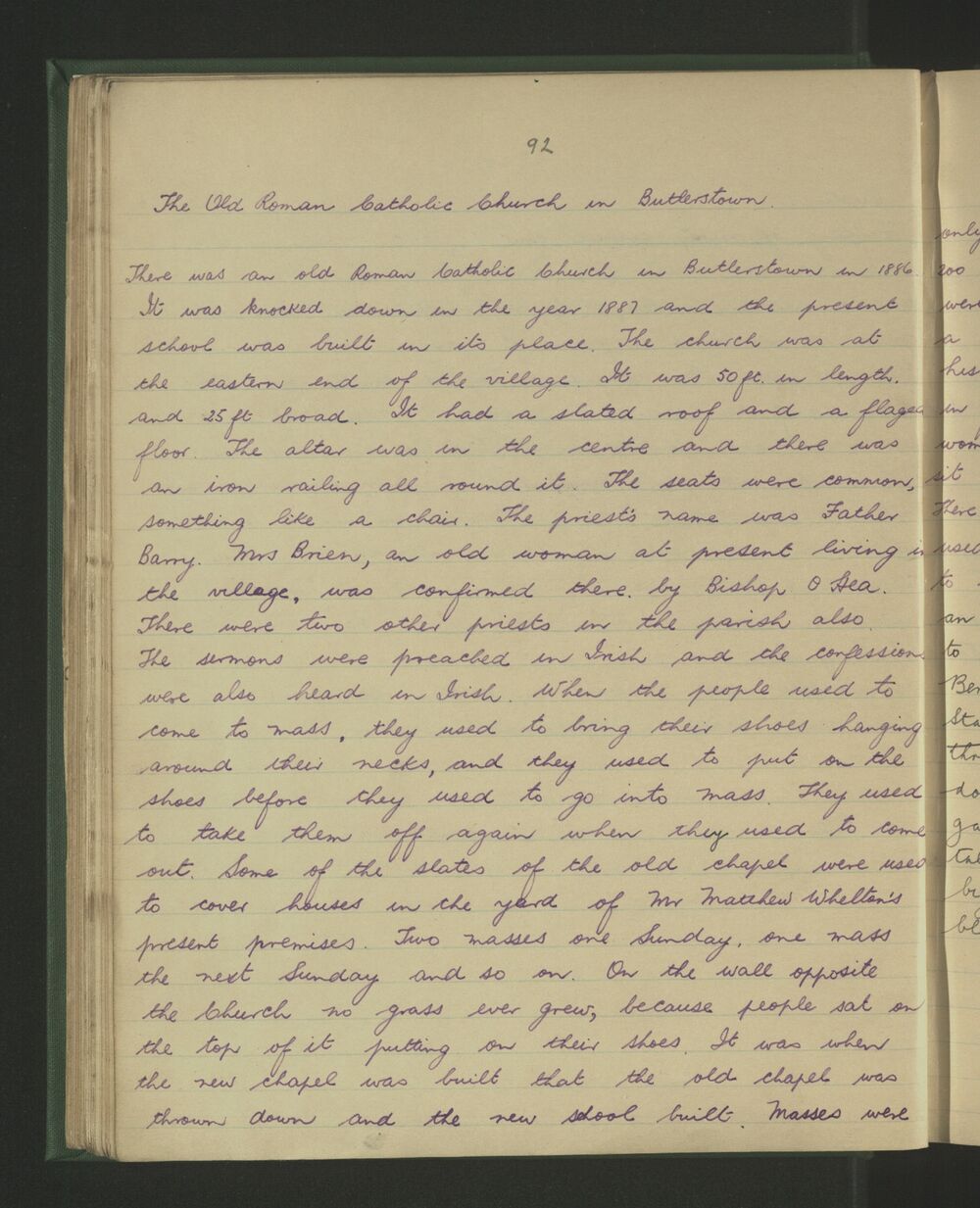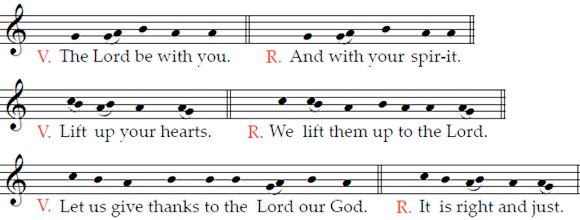17 November 2024: Enrolment Sunday
To do on Sunday:
Bring your (labelled) baptismal candle; some people will prepare to read the Prayer of the Faithful (other page).
The priest will ask the First Communion children to come up to the front row after the Gospel and will chat to them there for a minute or two. He’ll practise the singing with them (below) and ask about where the altar is, the baptismal font. Then they will return to their places.
What is an altar?An altar is a raised place, a raised flat surface, for placing an offering upon it. Christian altars are in the shape of a table - a table you stand at, rather than sit at - because the offering at Mass is also like a meal, where food and drink are consumed. |
Questions to help you chat at home:
About you:
- Do you know where you were baptised? The parish? The church?
- Do you know who baptised you? The priest’s name, the deacon’s name?
- Who were your sponsors (godparents)? Have you seen pictures or videos of your baptism?
- Have you been confirmed already? Or are you receiving your Holy Communion before being confirmed?
Where in the church?
- Where is the baptismal font in the church you know best?
- Where are the altars in the church you know best?
The altar is in the shape of a table so it has a tabletop and some support.
Barryroe church has four altars. Can you see them all?
Courtmacsherry has two altars. Can you see them both?
Where in the parish?
Do you know where both churches are in the parish? Do you know where the older churches were in the parish before they were demolished and replaced?: where in Lislevane and where in Butlerstown?
And before those churches, where was Mass celebrated in the parish? Read from the Schools’ Project of the 1930s which has a piece on Butlerstown church and the sacraments of confirmation and first holy communion:
 “The Schools’ Collection, Volume 0318, Page 092” by Dúchas © National Folklore Collection, UCD is licensed under CC BY-NC 4.0.
“The Schools’ Collection, Volume 0318, Page 092” by Dúchas © National Folklore Collection, UCD is licensed under CC BY-NC 4.0.92
The Old Roman Catholic Chuch in Butlerstown
There was an old Roman Catholic Church in Butlerstown in 1886. It was knocked down in the year 1887 and the present school was built in its place. The church was at the eastern end of the village. It was 50 ft. in length, and 25 ft broad. It had a slated roof and a flaged floor. The altar was in the centre and there was an iron railing all round it. The seats were common, something like a chair. The priest's name was Father Barry. Mrs Brien, an old woman at present living in the village, was confirmed there by Bishop O Hea. There were two other priests in the parish also. The sermons were preached in Irish and the confessions were also heard in Irish. When the people used to come to Mass, they used to bring their shoes hanging around their necks, and they used to put on the shoes before they used to go into Mass. They used to take them off again when they used to come out. Some of the slates of the old chapel were used to cover houses in the yard of Mr Mattthew Whelton's present premises. Two Masses one Sunday, one Mass the next Sunday and so on. On the wall opposite the Church no grass ever grew, because people sat on the top of it putting on their shoes. It was when the new chapel was built that the old chapel was thrown down and the new school built. Masses were
(continues on next page)
 “The Schools’ Collection, Volume 0318, Page 093” by Dúchas © National Folklore Collection, UCD is licensed under CC BY-NC 4.0
“The Schools’ Collection, Volume 0318, Page 093” by Dúchas © National Folklore Collection, UCD is licensed under CC BY-NC 4.0
93
The Old Roman Catholic Chuch in Butlerstown
(continued from previous page)
only on Sundays and Holidays. There used to be about 200 people at Mass. The ages for Confirmation were 8,9,10 years and Holy Communion was given a week afterwards. The most marriages were at Lislevane. They used to go on saddle horses, the men in front and the women behind. The seat that the women sat on was called the "cuilóg". They used to sit on the walls outside the gate talking before Mass. There were no missions only back stations. The dead used to be prayed for in Irish but no corpse used to be brought to the chapel. There was a bell and an old man used to ring it. One man used to serve Mass. There used to be no Benediction & no music. There were no Stations of the Cross during Lent. It had three common doors, one front & two side doors. People used to stand outside the gate after Mass. Men used to wear big tall hats with feathers. Women used to wear big freize petticoats, black & red and a black home spun dress & a frieze cloak.
Singing at Mass
Dialogue of the preface.
Listen and sing along

The Lord be with you - And with your spirit: The priest greets the congregation, saying and wishing that the Lord Jesus be present at the beginning of the most important prayer at Mass. The people respond recognising the Lord is present in a different way in the priest presiding for the benefit of the congregation, he is “with his spirit”, a biblical way of saying the Lord is with a person.
Lift up your hearts: ancient custom of looking upwards to the sky when praying, imagining God is above us.
Let us give thanks - principally for Jesus’ love and work for us. We “do this in memory” of Jesus, in thanksgiving for his work, for offering his life.
It is right and just - we are obliged to give thanks, and it is worthwhile to give thanks because we benefit from it, receiving grace from God.
Prayer (singular!) of the Faithful
At the conclusion of the Creed, which we recite together, the six people come forward to the entrance of the sanctuary, bow at the waist (not too deep) to the altar, and then go to the left-hand side, the first person goes up the side steps to the ambo.
The priest is introducing the Prayer of the Faithful at the other side of the sanctuary at this point, so when he’s done, the six people read the “intentions”
Download and Print the Prayer of the Faithful
|
…we pray that the Lord will preserve us, we trust in him and direct our prayers to him.
|
At the conclusion of the six intentions, please wait for the priest to conclude, mentioning the deceased, and finishing up with a prayer: …through Christ our Lord. Amen.
Then you may line up in front of the altar again, bow gently (at the waist), and then return to your places.
